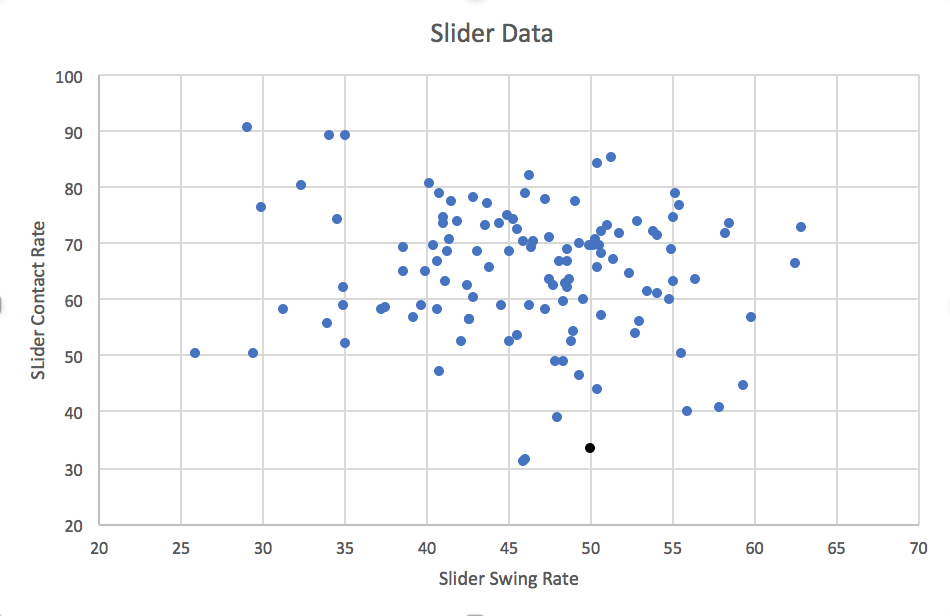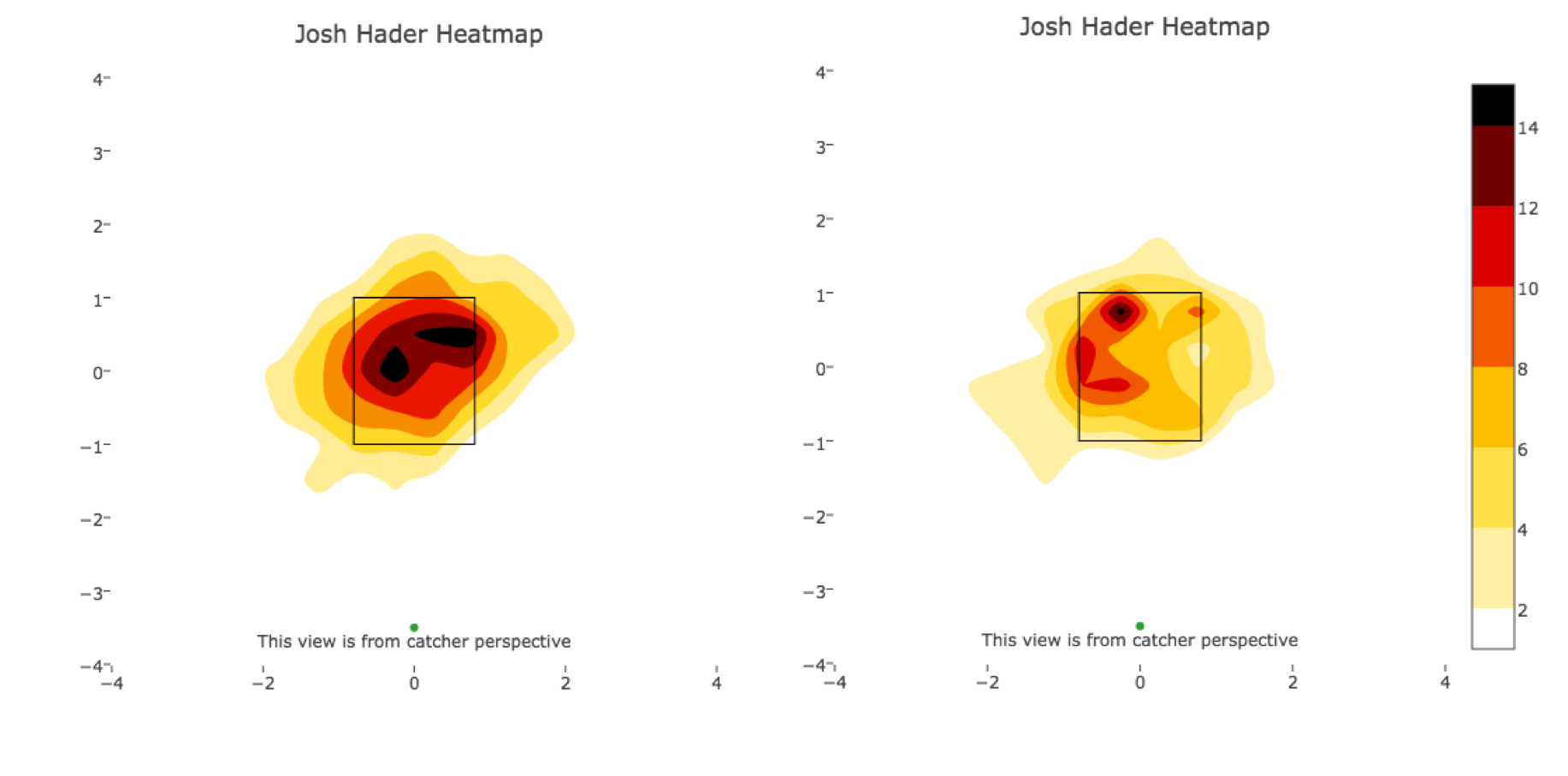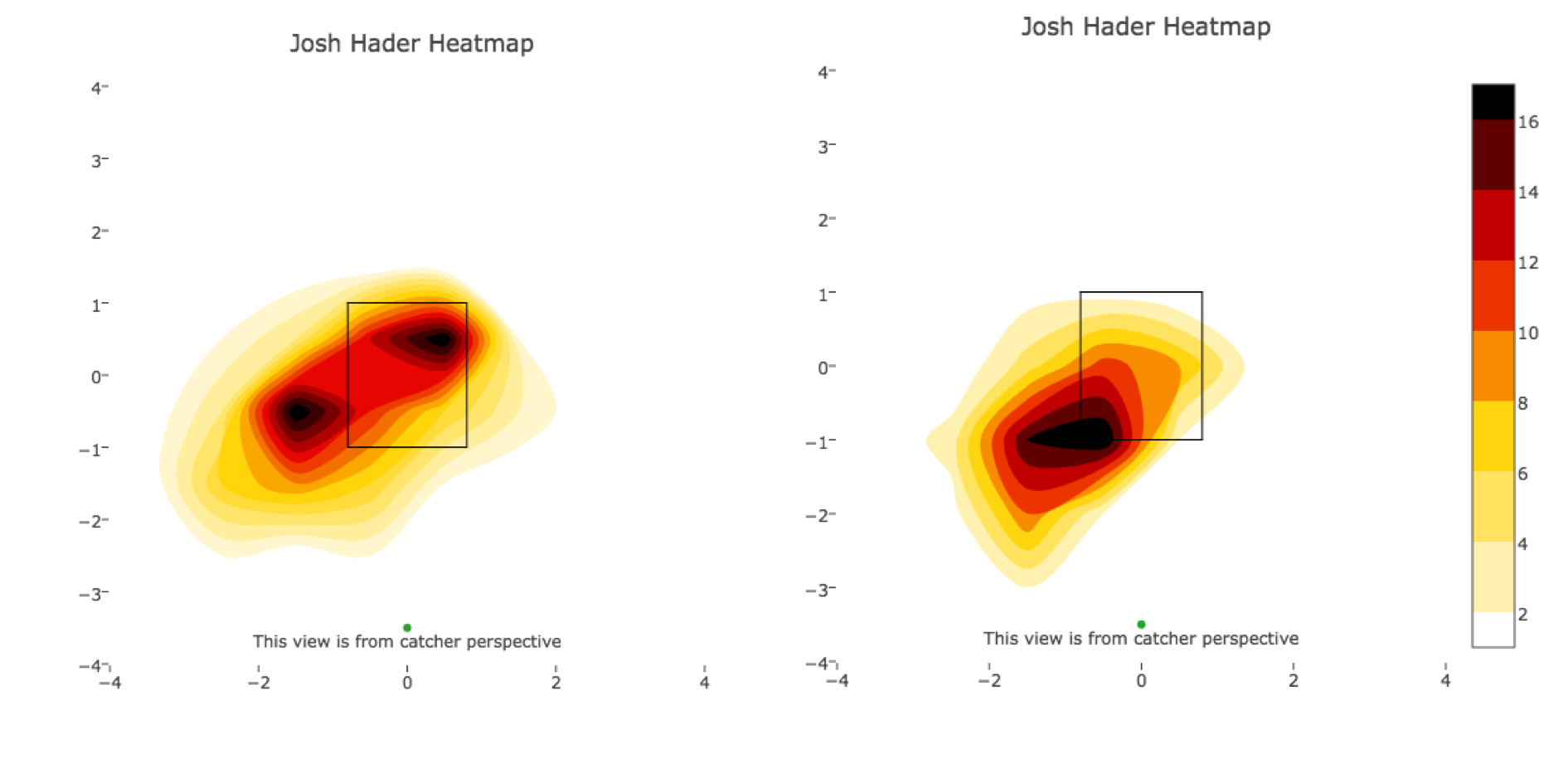(Photo by Tony Quinn/Icon Sportswire)
On April 30th, Josh Hader faced nine hitters. He walked one of them, and struck out the other eight. If you want to see them all, go here. Hader has struck out 62.8% of the batters he has faced so far in 2018. The highest rate in major league history for a single-season was Aroldis Chapman’s 52.5% rate in 2014. I think Hader deserves a little appreciation.
Hader was great last season, posting a 2.08 ERA/3.03 FIP in 47.2 innings of relief. He was drafted as a presumed eventual starting pitcher, but he proved to be an incredible asset of the Milwaukee Brewers‘ bullpen last season. This year, Hader has elevated those numbers to a 1.00 ERA/0.38 FIP. Yes, in 18 innings of baseball, Josh Hader has an FIP of .38. Even in small samples, that’s unfathomable. To go along with that 62.8% strikeout rate, he has walked only 8.1% of hitters. He is the most valuable reliever in baseball right now. Hader was great last season, but is on his own planet of relief pitchers so far this year. What’s different?
For one, Hader has abandoned a changeup that he threw on occasion last year. He sat mostly on his fastball last season working in his slider and changeup on occasion. He threw his fastball 81.4% of the time, his slider 11.1%, and his changeup 7.1%. This year, he’s throwing his fastball 68.6% of the time and his slider 29.6%. Last season against righties, Hader heavily favored his fastball and mixed in his changeup. The slider was essentially not an option against right-handed hitters. Now, the pitch usage looks wildly different. Here is his slider usage against RHH the past two years:
| Season | All Counts |
First Pitch |
Behind | Two Strikes |
|---|---|---|---|---|
| 2017 | 3% | 2% | 1% | 3% |
| 2018 | 23% | 26% | 21% | 17% |
Hader still prefers to use his four-seam fastball to put righties away, but the drastic difference in early count and behind situations displays the confidence with which he is using the pitch. Against lefties, Hader’s slider usage is also significantly up across the board, but he featured it prominently against them last season. His slider has been an exceptional strike getter and strikeout getter. The pitch has enabled the success. Here is a plot of swing rate against contact rate on sliders so far this year (min. 70 innings), with Hader in black:

Only Edwin Diaz and Kyle Gibson (!!) have lower contact rates on their sliders than Hader. And Hader is also generating a swing at an above-average rate. No one is matching his ability to generate the whiffs while also inducing a considerable amount of swings. Dylan Bundy and Patrick Corbin are the only pitchers who hold higher swinging strike rates on the pitch. But here is where the slider from Hader has been so uniquely dominant this season. Now is the same plot as above but considering only sliders in the strike zone, with Hader in black again:

Edwin Diaz sits right below Hader in both categories. And no one else even comes into the realm of either pitcher. This is a small sample, of course. However, what these two guys have managed to do while staying in the strike zone is absurd. Hitters are swinging at strikes, but still missing about 60% of the time against these guys. Diaz has a 42.1% zone swinging strike rate on his slider. Hader has a 41.9% rate in the same category. No other pitcher even tops 34%, and just two others are above 30%. Hader’s ability to stay in the strike zone and still get whiffs on his slider is an incredibly valuable skill that has been nearly unrivaled by anyone else in the league this season.
Using the strike zone with the slider has complimented the fastball exquisitely. The slider still is not the preferred strikeout pitch. Of Hader’s 39 strikeouts, only 13 have come on sliders. In addition to being a dominant pitch in it’s own right, the slider is setting up the fastball to be even better than it already was.
In 2018, Hader’s pitching style has appeared to be changing eye levels to hitters, mostly on his glove side. Take a look at his fastball heat maps, with 2017 on the left and 2018 on the right:

Hader is all over the strike zone in 2017, but this season he has kept everything elevated and across his body (inside to righties). Last season, Hader tried to work inside and outside to both lefties and righties. Now, most fastballs are away to lefties and inside to righties. And his slider heat map in 2017 and 2018:

Again, Hader was working the strike zone all over with his slider last year. Now, the spread is pretty tight to down and away on his glove side. He is commanding the strike zone low with his slider and dominating the zone up with his fastball. Hader is messing with the eye hitters. Take this sequence to Jesse Winker from his eight strikeout performance a few days ago:
[gfycat data_id=”SnivelingInfantileJanenschia”]
Down 2-1, Hader gets a little help from the umpire, but this is still a perfectly executed pitch. He hits the catchers spot perfectly on the outside of the plate. There is very little Winker can do with this pitch. After getting back even, Hader offers this:
[gfycat data_id=”QuerulousBlindAfricancivet”]
After painting the corner for a called strike, Hader comes back to elevate to try and get a whiff for a strikeout. He is able to get a bat on it, but with 96mph perfectly elevated, Winker is not able to get it in play. He finishes with this pitch:
[gfycat data_id=”RemarkableOrangeBirdofparadise”]
Hader elevates, then takes Winker all the way down low and away. These three pitches are executed perfectly. Hader works the edges of the strike zone while creating large disparities in location from pitch to pitch to keep the hitter off balance. Look at this four pitch strikeout to Lewis Brinson:
[gfycat data_id=”CoolLoathsomeBarbet”]
Hader proves he can control the sweeping motion on his slider by locating it in the zone to get a strike from Brinson. On the other three pitches, he throws three monster high-velocity fastballs that ride in hard on the hitter. Hader is using unhittable cut and inside heat to get Brinson on back to back pitches. He can change up locations or use the raw filthiness of his pitches to get hitters out.
The low arm slot from Hader enables across the body movement that perfectly plays into his prominent use of his glove side of the strike zone. The low arm slot creates incredible sweeping movement on his slider to dive away from lefties. Then, his fastballs come screaming in on the hands of righties. As mentioned earlier, the biggest development for Hader this season is the ability to command the slider to get strikes against right-handed hitters. His fastball was already great. The last two seasons he has posted zone rates over 55% and whiff rates over 17% on the pitch. That is unimaginably good. But his increased slider usage and perfect utilization of the strike zone has pushed him to be the best relief pitcher in baseball thus far.
Of course, there is some luck involved. You simply can’t pitch this well without luck. Hader has an unsustainable .176 BABIP, but his xBABIP is still .198. Additionally, his expected wOBA is 25 points higher than his actual wOBA. Again, though, we are still looking at an expected wOBA less of .161. Out of 405 pitchers with at least 100 pitches thrown this season, that comfortably leads the major leagues.
Hader won’t keep up this pace. He won’t break the single-season strikeout rate record. But he will continue to be one of the best relief pitchers in the league and make the Brewers think hard about leaving him in the bullpen. Hader developed a great slider, paired it with an already great fastball, and is now taking over.

Any chance he becomes a starter as was initially presumed? Would he have to significantly change the way he pitches, if that happens?
I don’t think we will see it this season, but down the road he has to be with the way he’s performed. and yes, he would have to significantly change. You can’t throw a fastball that doesn’t multiple versions 70% of the time as a starter. He will have to bring back the changeup and prove it to be a viable pitch.